
Middle Eastern Collection
In early 1897, Hopp travelled around the Western Mediterranean, and several of the artefacts he acquired at the time can still be seen in his collection. He first bought a group of ancient objects in Sicily, and then in Tunis, he visited the former Beylic palace that had recently been converted to a museum (today the Bardo Museum), where he purchased a glazed tile. Pieces of jewellery he acquired attest to his visit to Tangier (in Morocco), while in Granada, having toured the Alhambra, he procured an Alhambra panel from the souvenir shop of a local master craftsman Diego Fernandez Castro. The following year, Hopp travelled around the Eastern Basin of the Mediterranean, and notable acquisitions from this tour include Syrian jewellery and a metal vase from Damascus. Although Hopp made countless additional purchases in Egypt, India, Arabia, and the Balkans, he cannot be regarded as a connoisseur of Islamic art. His purchases reflected the kind of souvenirs that would typically appeal to wealthy tourists roaming around the local bazaars. Nevertheless, they formed the basis of the museum’s Middle Eastern Collection.
In the period between the world wars, noted orientalists like Aurél Stein and Gyula Germanus donated objects – e.g., an incense holder from the twelfth, and metal dishes from the fourteenth century – to enrich the museum’s collections.
The Middle Eastern Collection was being formed for a long time and relatively late, in the 1950s, since ancient artworks, objects from Ottoman Hungary, and applied arts – especially carpets and ceramics – were aimed at the collections of the Museum of Fine Arts, the Hungarian National Museum, and the Museum of Applied Arts, respectively.
After World War II, at the beginning of the 1950s, it was Edit Egyed and Géza Fehérvári who set up the new Middle Eastern Collection. They scoured all the public collections in Budapest for pieces of Islamic art, also recovered nearly four hundred items of metalwork from different factory sites around Hungary. This situation had come about due to a shortage of raw materials in the country, holding back the proclaimed development of heavy industry, which was remedied by importing large amounts of scrap metal from Egypt. The consignments of “waste” also contained a substantial amount of material of artistic value, so Egyed and Fehérvári paid weekly visits to the factory of the Manfred Weiss Steel- and Ironworks in Csepel, a district of Budapest, to select items worth keeping for the museum.
The collection underwent significant expansion as a result of occasional reorganisations of the public collections in Budapest, particularly in the 1960s. Several hundred objects were transferred from the Museum of Applied Arts, including the earliest Islamic artefact in the collection, a ninth-century Egyptian gravestone.
The most important section of the present collection of more than a thousand items represents Iranian arts, the earliest pieces of which are bronze objects from Luristan, dating back to the beginning of the first millennium BC. Another significant section is created by the thirty-eight objects donated to the Hopp Museum between 1965 and 2000 by Géza Fehérvári, who was at the time teaching at the School of Oriental and African Studies (SOAS) in London. These artworks offer insight into the techniques of medieval Islamic pottery. The most comprehensive section is that of the Qajar period, represented mainly by metalworks, ceramics, and miniature paintings. The collection is supplemented by an ensemble of Arabic, Persian, and Turkish manuscripts.
The only attempt undertaken so far in Hungary to present a comprehensive overview of Islamic art was the exhibition in 1955, organised by the Museum of Applied Arts and featuring 139 objects from the Hopp Museum.
Gallery
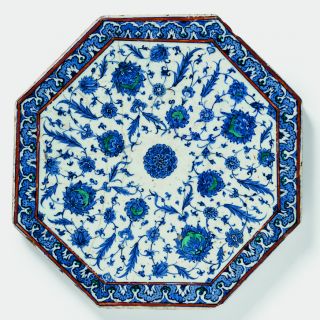
Turkey, Iznik, ca. 15753
Fritware, underglaze painting
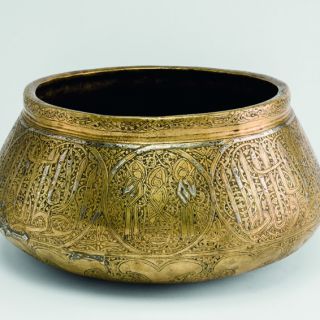
Iran, Fars province, 14th century
Hammered brass with silver inlay

Iran, 19th century
Steel with gold and silver inlay
From the collection of Mr and Mrs Béla Ágai
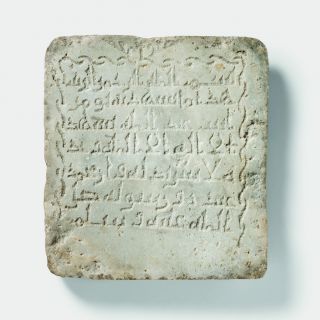
Egypt, Cairo (Fustat) (?), mid-9th century12
Engraved marble
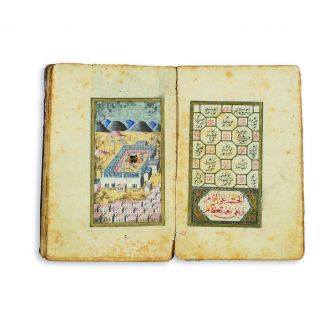
Turkey, Istanbul (?), 1771–1772
Paper, black and red ink, watercolour, gilding, blind-tooled binding

Iran, first half of the 20th century
Watercolour on paper
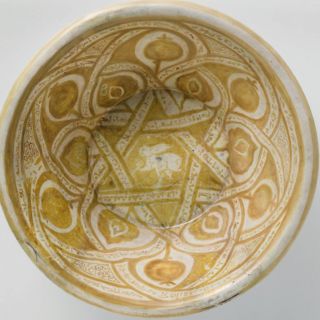
Egypt, Cairo (Fustat), 11th century
supplemented: England (?), mid-20th century
Fritware, overglaze painting
Gift from Edmund de Unger
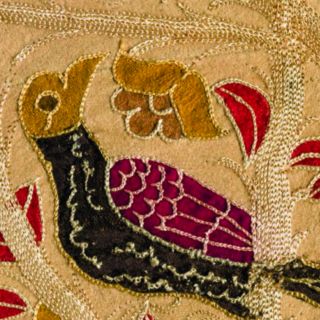
Iran, mid-19th century
Wool and silk, embroidery
and appliqué
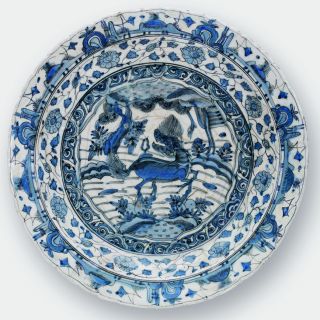
Iran, Mashhad, ca. 1630
Fritware, underglaze painting
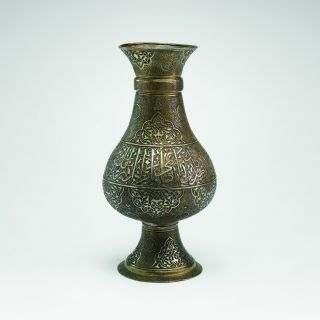
Syria, Damascus, end of the 19th century
Brass with silver inlay
Collected by Ferenc Hopp